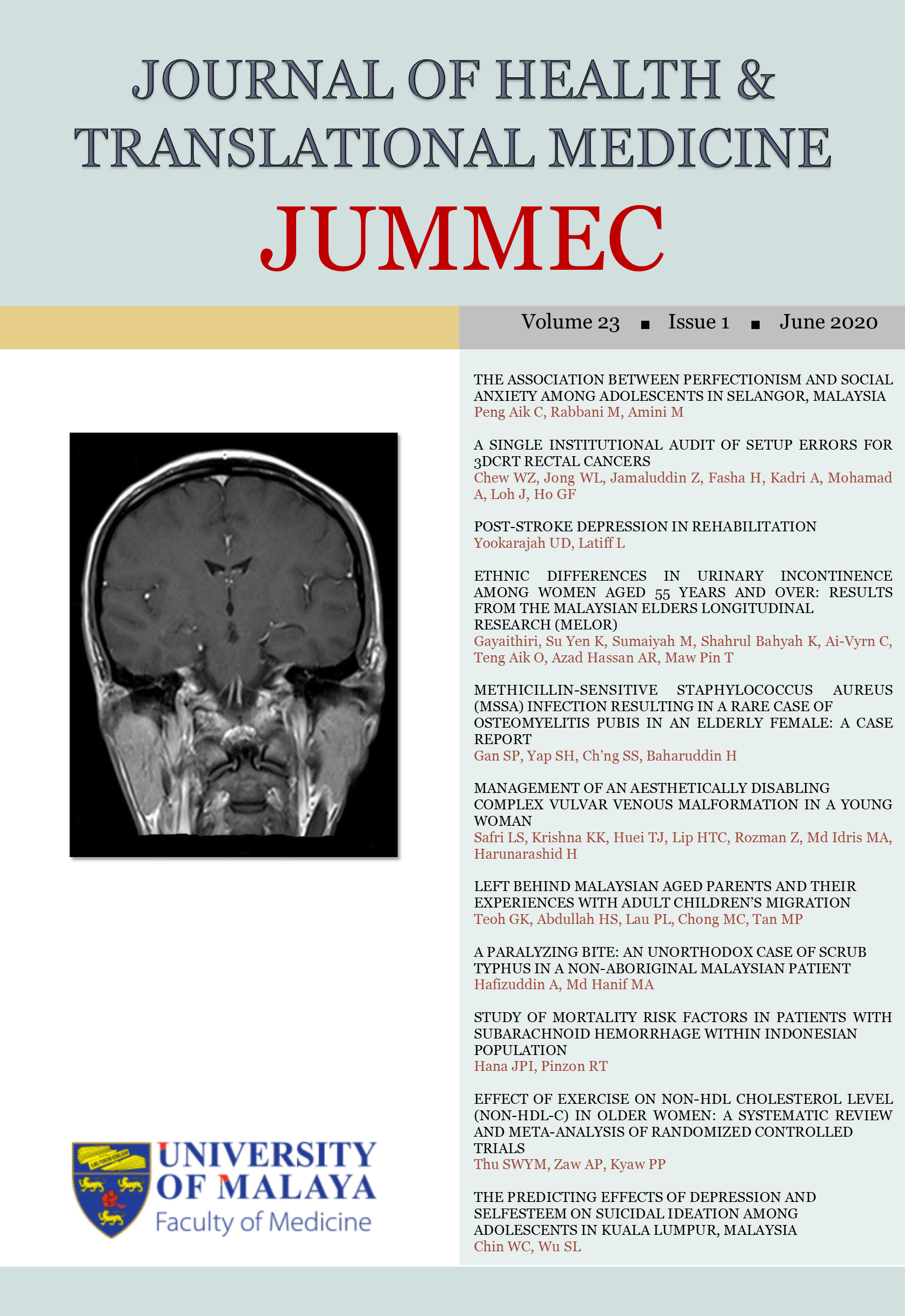EFFECT OF EXERCISE ON NON-HDL CHOLESTEROL LEVEL (NON-HDL-C) IN OLDER WOMEN: A SYSTEMATIC REVIEW AND META-ANALYSIS OF RANDOMIZED CONTROLLED TRIALS
Received 2019-04-04; Accepted 2019-12-13; Published 2020-04-20
DOI:
https://doi.org/10.22452/jummec.vol23no1.10Keywords:
Exercise, Non-HDL-C, Older Women, Meta-analysisAbstract
Background: Many studies have shown that exercise can effectively reduce the non-high density lipoprotein cholesterol (non-HDL-C) level, one of the major risk factors for cardiovascular diseases, in different sex and age groups. However, there are very few studies conducted in older women, who are in a group having a higher mortality rate due to cardiovascular diseases. Moreover, there has been no recent meta-analysis focusing on the effect of exercise on non-HDL-C level in older women. The purpose of this study was to investigate the effect of exercise on non-HDL-C level in older women (≥50 years old) by means of systematic review and meta-analysis of previous randomised controlled trials.
Methods: Searches were conducted from 9 electronic databases by applying specific eligibility criteria of the review. Data regarding changes in non-HDL-C, high density lipoprotein cholesterol (HDL-C) and total cholesterol levels, were extracted as primary outcomes. Random-effect meta-analysis was used to calculate pooled effect sizes of primary and secondary outcomes.
Results: Ten studies that met the inclusion criteria were selected for meta-analysis. Random-effect meta-analysis showed statistically significant reduction in non-HDL-C level (= -9.69 mg/dL; 95%CI= -17.09 to -2.29 mg/dL; p<0.05) and increase in HDL-C level (= 3.0mg/dL; 95%CI= 0.61 to 5.4; p<0.05), but no significant change in total cholesterol level (= -5.99 mg/dL; 95%CI= -12.64 to 0.66; p>0.05) in the exercise group compared to the control group. Subgroup analysis of data from different continents showed significant subgroup differences in the non-HDL-C level after exercise (Q= 12.39; p<0.005; I2= 83.9%).
Conclusion: Exercise decreases non-HDL-C level and increases HDL-C level in older women and might be efficacious in preventing dyslipidemia and associated diseases in older women.
Downloads
Downloads
Published
Issue
Section
License
All authors agree that the article, if editorially accepted for publication, shall be licensed under the Creative Commons Attribution License 4.0 to allow others to freely access, copy and use research provided the author is correctly attributed, unless otherwise stated. All articles are available online without charge or other barriers to access. However, anyone wishing to reproduce large quantities of an article (250+) should inform the publisher. Any opinion expressed in the articles are those of the authors and do not reflect that of the University of Malaya, 50603 Kuala Lumpur, Malaysia.


